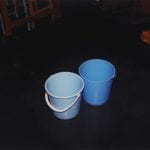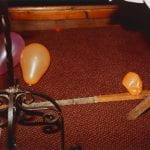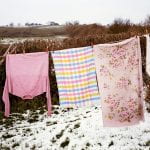‘Seeing’ the mundane & banal
‘There is no such thing as an un-photographed or un-photographable subject. It is for us to determine a subjects significance, knowing it must have one, for the artist has photographed it and thereby designated it as significant.’ (Cotton, 2014, p.115)

This is an adaptable session in which participants will explore the idea that banal/mundane subject matter can be made extraordinary merely by the act of photographing it. It encourages participants to ‘look’ at the world around them, explore the role of aesthetics, framing, vantage point and depth of field, and investigate the idea of ‘photographic seeing’ as the world is transformed / constructed into an image.
‘To photograph is to confer importance. There is probably no subject that cannot be beautified; moreover, there is no way to suppress the tendency inherent in all photographs to accord value to their subjects’ (Sontag, 1977, p.28)
This Session could be run in conjunction with:

‘The Fact that the banal image points towards its own status as object suggests that the aesthetics of the banal be approached not just in terms of what we read in the image, but of how we read it.’ (Shinkle, 2004, p.175)
Aims & Outcomes:
- For participants to visually explore the nature of a ‘photographic’ way of seeing and framing the world around them
- For participants to produce 5 (edited) images which visually / aesthetically transform and change the objects / scenes they have photographed
- For participants to conduct in depth research on the work of Peter Fraser and apply these ideas to thier practice.
- *This session works best when participants are encouraged to really ‘look’ at the world around them rather than construct or interfere with the scene.
- Participant Outcome: 5 6×4 digital prints
Research: the work of Peter fraser:
You will need:
- Digital cameras for all participants (and appropriate memory cards) *This session can also be run using camera phones or Lumix cameras
- Card readers
- Access to computers (or laptops)
- An introductory brief & Presentation (below) for participants to outline the ideas and provide examples
- A booked room to critique participants work (either via a projector or via print)
- Blue tack to pin the work
- Costings and Risk Assessments
Presentation ideas: Looking at the overlooked
Preparation work:
- Ask participants to watch the Peter Fraser (2013) Tate Shots interview which can be accessed here
- Ask participants if they have thier own digital cameras and cards
- Make sure you have access to computers
- Make sure there are enough team members to support participants (never assume thier prior knowledge)
- Decide whether you will project the work or print it.
- If you are printing it (6×4) make sure the Photo Lab are aware and be aware of timekeeping so they have space to print the work.
- *If you are running this session off campus, make sure there is access to printers or projectors
Suggested Session Outline:
- Ask participants what they think most boring objects / scenes they can think of.
- Deliver presentation / brief and encourage discussion and debate
- In small groups investigate the local area and encourage visual exploration of banaal objects and scenes
- Encourage participants not to interfere with the object / scene but to try to show it in a ‘new way’ through the act of photographing it.
- Download and edit final images (5 per participant) *have a break here to give good time to print these physically or organise a slideshow
- Critique and feedback with the group























